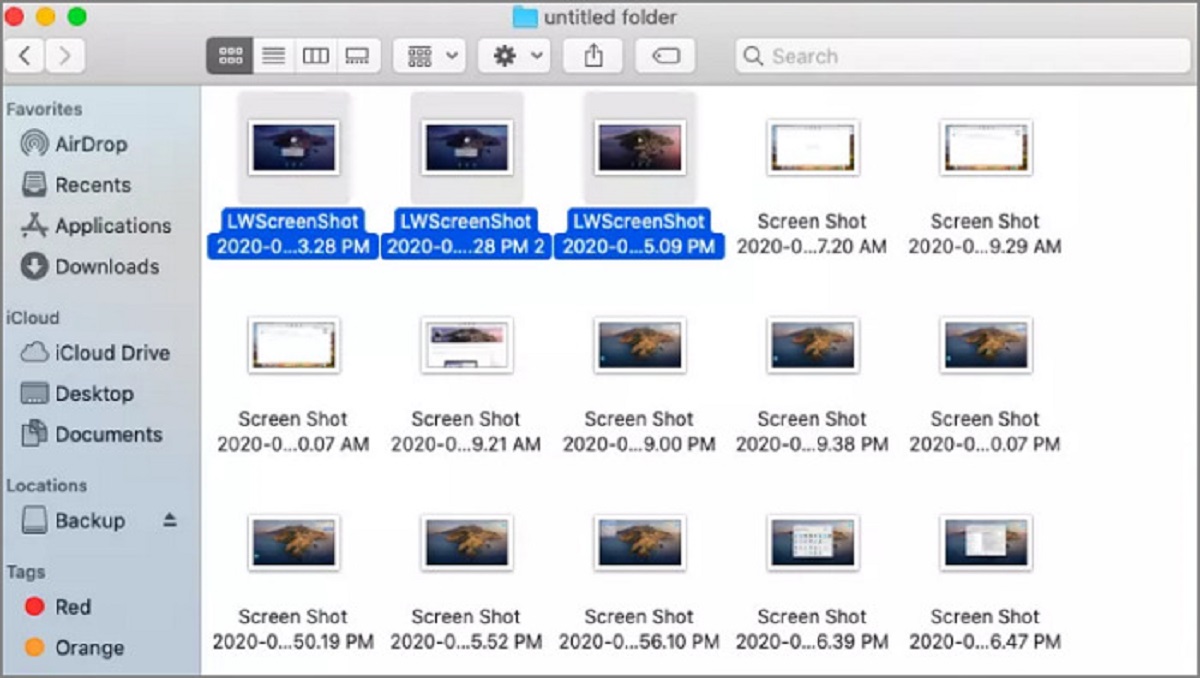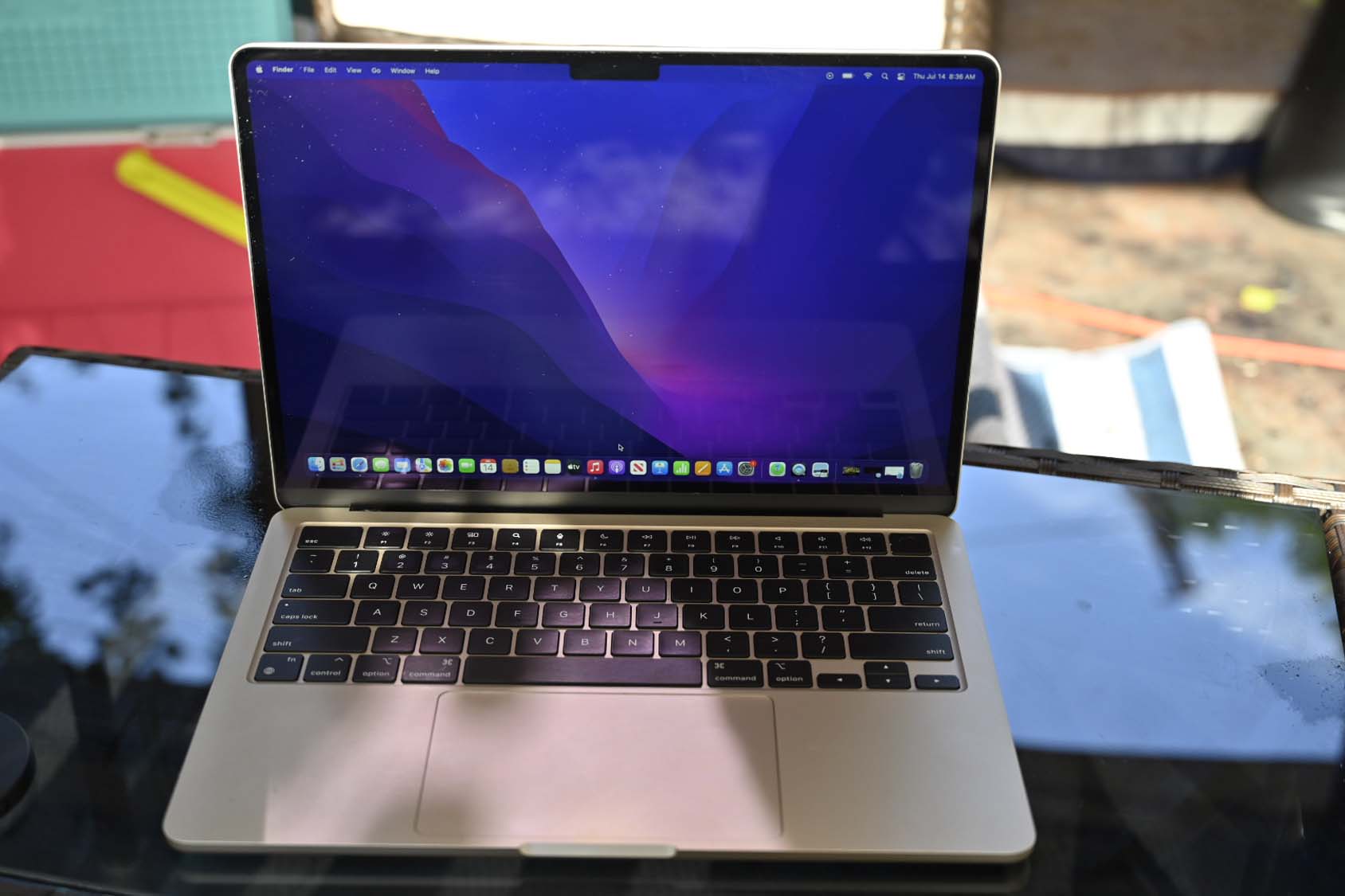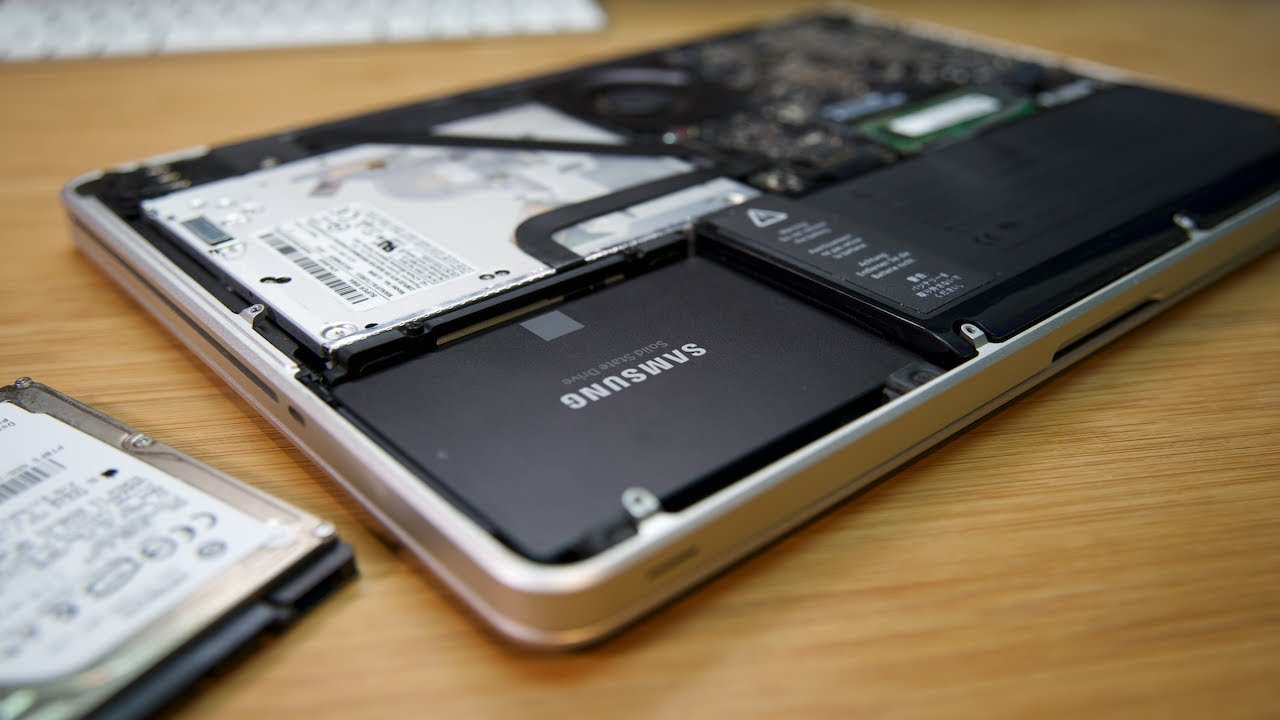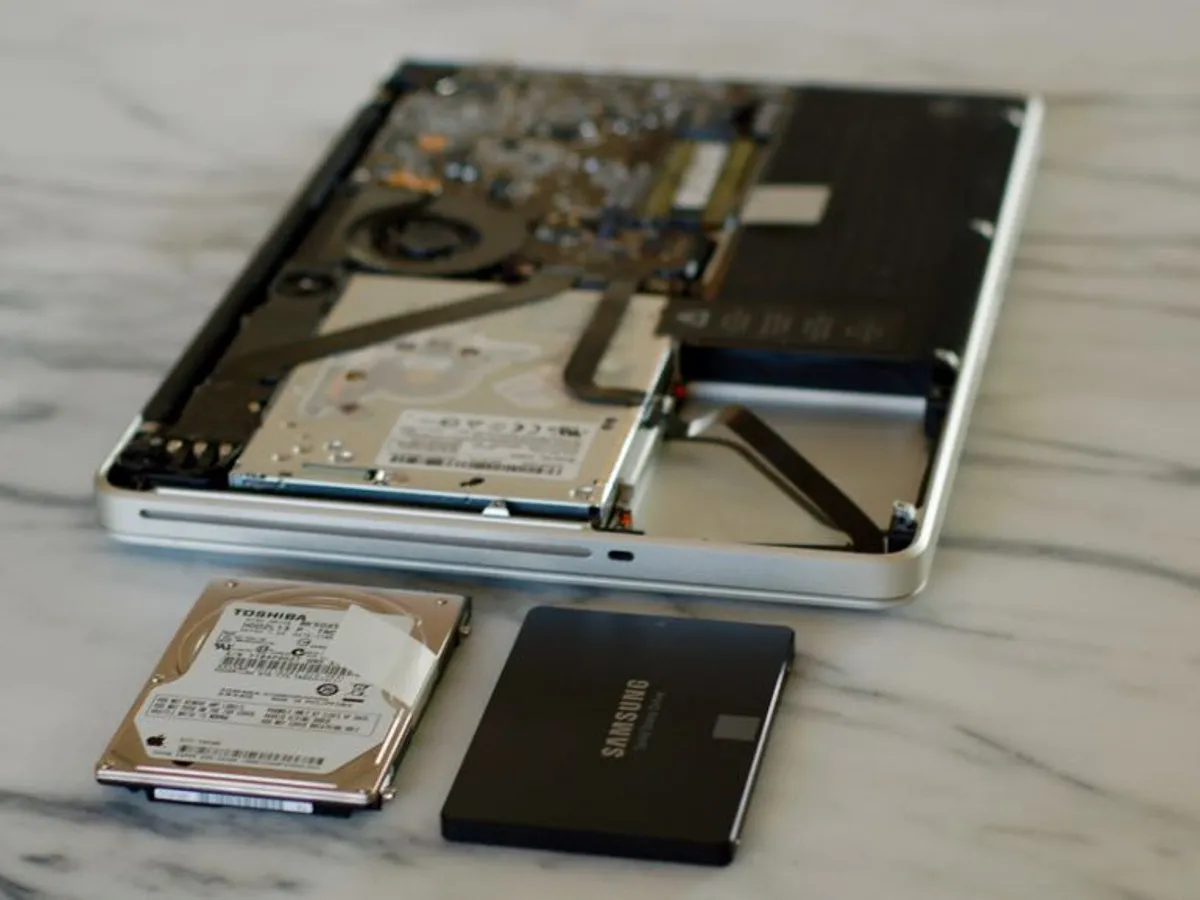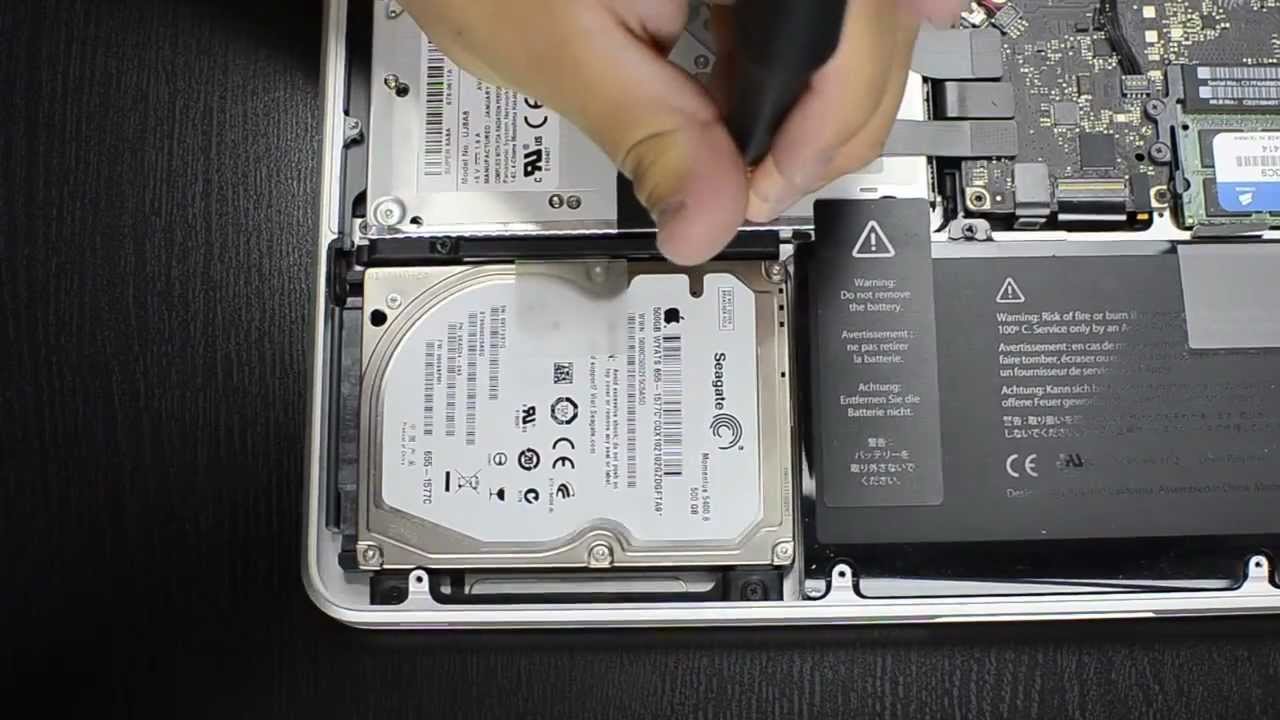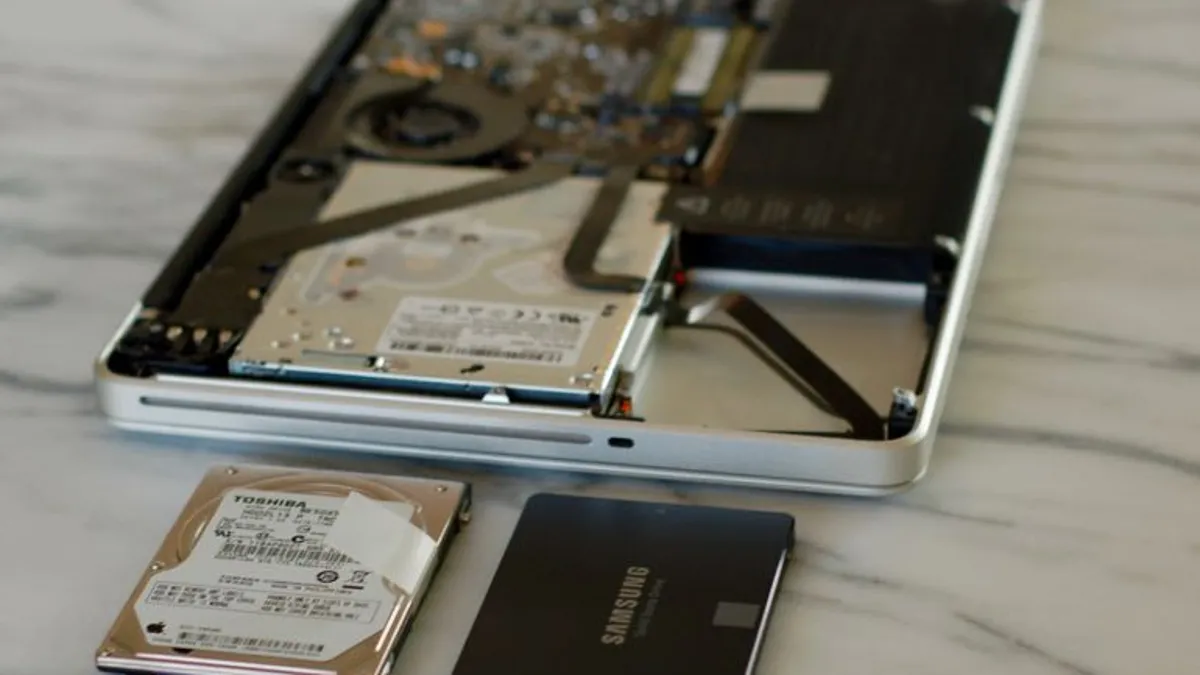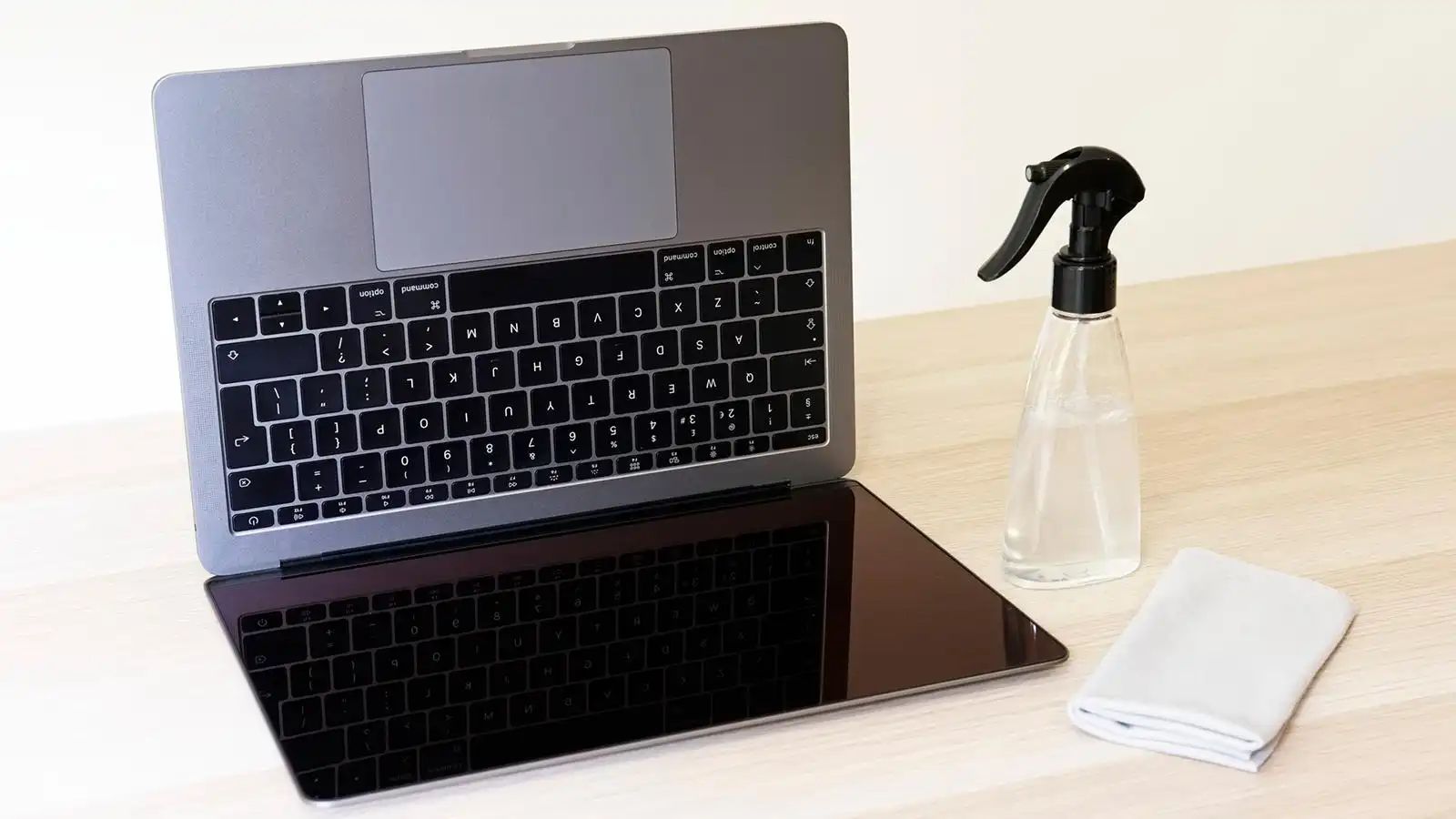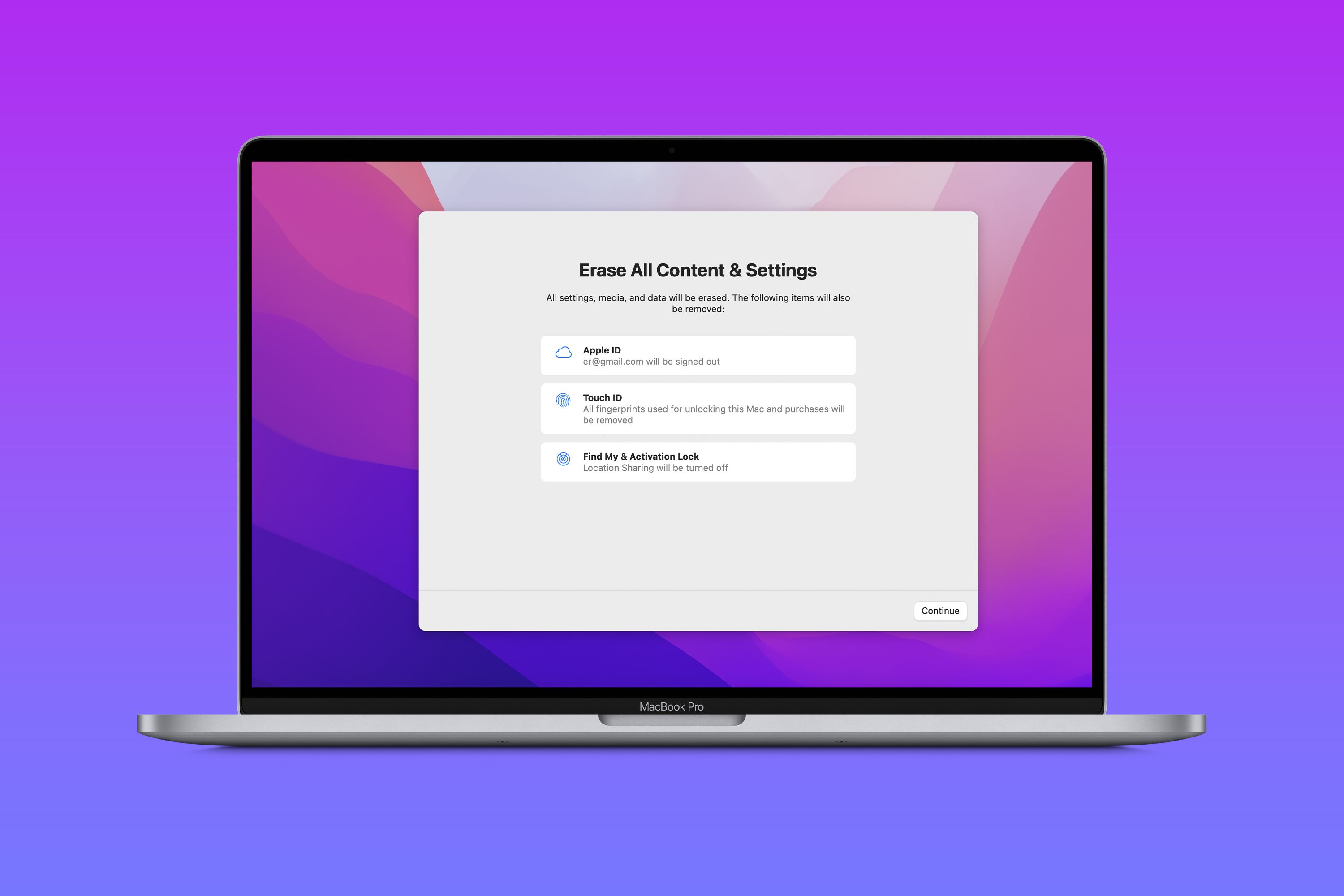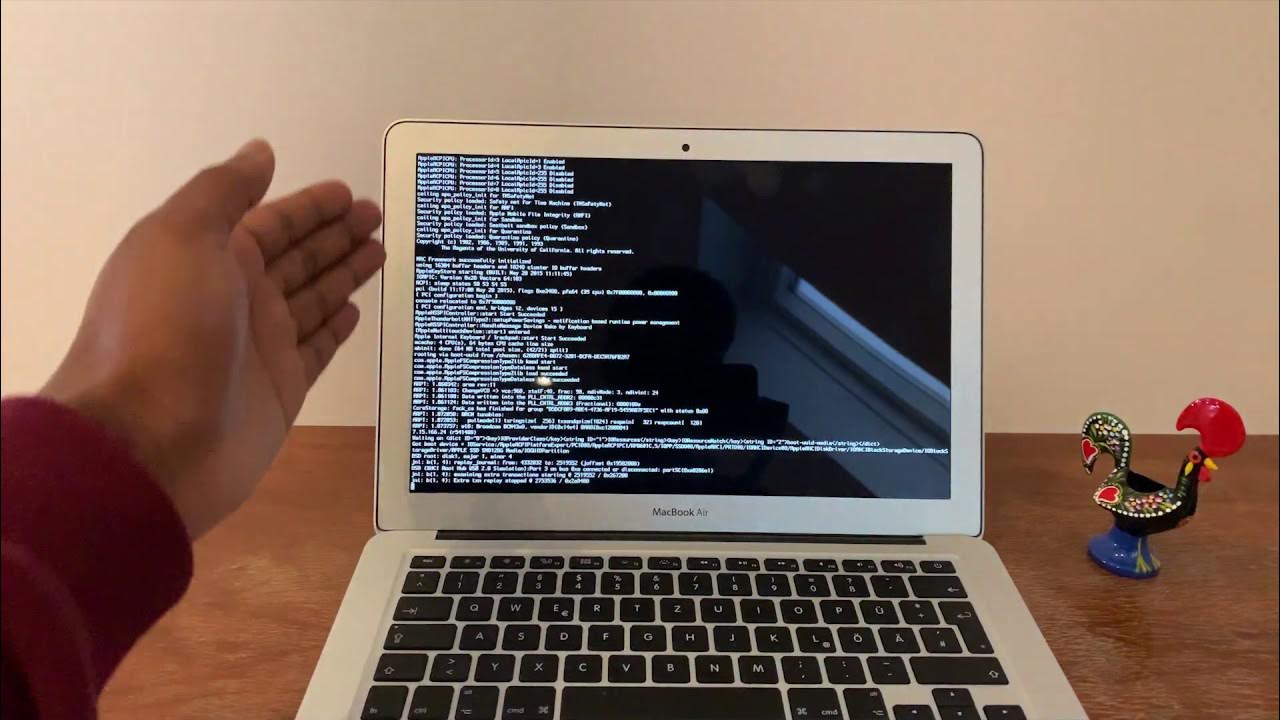Introduction
Welcome to the world of Macbook Pro and the importance of backing up your precious data. Whether you use your Macbook Pro for work, school, or personal reasons, there is always a risk of data loss due to hardware failure, software errors, or even accidents. That’s why it’s crucial to have a reliable backup solution.
Backing up your Macbook Pro is like having a safety net that protects your valuable files, documents, photos, and videos from being lost forever. In the event of a data loss, having a backup means you can easily restore your files and get back to business as usual.
In this article, we will guide you through the process of backing up your Macbook Pro to an external hard drive. With the help of Apple’s built-in backup utility, Time Machine, you can ensure that your data is safely duplicated and stored in a separate location.
Before we dive into the steps, it’s essential to note that an external hard drive is required for this process. Make sure you have a reliable and spacious external hard drive that is compatible with your Macbook Pro. It’s also recommended to format the external hard drive specifically for Mac compatibility.
Now, let’s explore the step-by-step process of setting up Time Machine and backing up your Macbook Pro to an external hard drive. By the end of this article, you will have peace of mind knowing that your data is safeguarded and easily recoverable.
Step 1: Connect the External Hard Drive to Your Macbook Pro
The first step in backing up your Macbook Pro to an external hard drive is to connect the drive to your laptop. Start by locating the USB or Thunderbolt port on your Macbook Pro. Depending on the model, you may have multiple ports available.
Once you have identified the appropriate port, take the USB cable or Thunderbolt cable that came with your external hard drive and plug one end into the drive and the other end into the port on your Macbook Pro.
Make sure the connection is secure to avoid any interruptions during the backup process. Your Macbook Pro should recognize the external hard drive and display it as a connected device.
If your external hard drive requires a power source, don’t forget to plug it in and ensure it is receiving power. This is especially important for larger, high-capacity drives that may need additional power to function properly.
Now that you have successfully connected the external hard drive to your Macbook Pro, you are ready to move on to the next step and prepare the drive for Mac compatibility.
Step 2: Format the External Hard Drive for Mac Compatibility
Before you can use your external hard drive with your Macbook Pro, it’s important to format it in a compatible file system. By doing so, you ensure that the drive will work seamlessly with your Mac operating system and Time Machine.
Connecting an unformatted or incompatible drive to your Macbook Pro may result in compatibility issues and prevent you from properly backing up your files.
To format the external hard drive for Mac compatibility, follow these steps:
- Open “Finder” on your Macbook Pro by clicking on the smiling face icon located in the Dock.
- Connect the external hard drive to your Macbook Pro, if you haven’t done so already.
- Locate the external hard drive in the left sidebar of the Finder window. It should be under the “Devices” section.
- Right-click or control-click on the external hard drive and select “Get Info” from the context menu. Alternatively, you can click on the drive icon and then click on the “File” menu at the top-left of the screen and choose “Get Info”.
- In the “Get Info” window, make sure you are on the “General” tab, which should be selected by default.
- Find the “Format” section and click on the dropdown menu next to it. Select “Mac OS Extended (Journaled)” as the format for optimal compatibility.
- Click on the “Erase” button to start the formatting process. This will erase all data on the external hard drive, so make sure you have a backup of any important files stored on it.
- Wait for the formatting process to complete. It may take a few minutes depending on the size of the drive.
- Once the formatting is finished, you will see a confirmation message. Click “Done” to close the “Erase” window.
Congratulations! You have successfully formatted the external hard drive for Mac compatibility. Now you can proceed to the next step and set up Time Machine backup on your Macbook Pro.
Step 3: Set Up Time Machine Backup
Time Machine is a built-in backup utility on your Macbook Pro that allows you to easily back up your files and restore them when needed. Setting up Time Machine is a straightforward process that ensures your data is protected and recoverable in the event of a data loss.
To set up Time Machine backup on your Macbook Pro, follow these steps:
- Click on the Apple menu in the top-left corner of the screen and select “System Preferences”.
- In the System Preferences window, click on the “Time Machine” icon.
- You will see the Time Machine preferences. Make sure the toggle switch at the top of the window is turned on. If it’s already on, you can proceed to the next step. If it’s off, click on the switch to enable Time Machine.
- Click on the “Select Backup Disk” button to choose the external hard drive you connected earlier.
- A list of available disks will appear. Select the external hard drive you want to use for Time Machine backup and click “Use Disk”.
- If you want to encrypt your backup for added security, check the box next to “Encrypt backups”. Enter a secure password when prompted, and click on “Set Password”.
- Time Machine will start preparing your backup disk, which may take a few minutes. Once the preparation is complete, the backup process will automatically begin.
That’s it! You have now set up Time Machine backup on your Macbook Pro. Time Machine will automatically back up your data at regular intervals, providing you with peace of mind knowing that your files are protected. You can customize the backup frequency and exclude certain files or folders from being backed up if desired.
In the next step, we will explore how to choose backup preferences and configure Time Machine for optimal backup management.
Step 4: Choose Backup Preferences
After setting up Time Machine on your Macbook Pro and selecting the external hard drive as the backup disk, it’s time to customize your backup preferences. Time Machine offers several options to ensure that the backup process suits your specific needs and requirements.
To choose your backup preferences in Time Machine, follow these steps:
- Click on the Apple menu and select “System Preferences”.
- In the System Preferences window, click on the “Time Machine” icon.
- In the Time Machine preferences, you will see a list of options to customize your backup.
Here are some preferences you can consider:
- Backup Disk: If you want to change the backup disk, click on the “Select Backup Disk” button and choose a different external hard drive.
- Options: Click on the “Options” button to exclude certain items from the backup. This can include specific folders, file types, or even entire drives.
- Backup Frequency: By default, Time Machine backs up your Macbook Pro every hour. If you prefer a different backup frequency, you can change it by clicking on the “Back Up Automatically” dropdown menu and selecting a frequency that suits your needs.
- Notifications: If you want to receive notifications about your backup status, check the box next to “Show Time Machine in the menu bar”. This will display a Time Machine icon in the menu bar, indicating the status of your backups.
- Backup Size: Time Machine will automatically manage the backup size by deleting older backups when the disk becomes full. If you want to customize the backup size or set a specific limit, click on the “Show Time Machine in Finder” button, and then right-click on the backup disk in Finder. Select “Get Info” and adjust the backup size accordingly.
Take your time to review and adjust these preferences to ensure that Time Machine backup meets your specific requirements. Once you have customized your backup preferences, Time Machine will automatically continue backing up your Macbook Pro based on the selected frequency and settings.
In the next step, we will explore how to start the backup process and monitor its progress.
Step 5: Start the Backup Process
Now that you have set up Time Machine and customized your backup preferences, it’s time to initiate the backup process. Time Machine will automatically start backing up your Macbook Pro to the external hard drive at regular intervals, based on the frequency you selected.
To start the backup process manually or to check the status of your backups, follow these steps:
- Click on the Time Machine icon in the menu bar at the top-right corner of the screen. If you don’t see the icon in the menu bar, go to System Preferences, click on Time Machine, and check the box next to “Show Time Machine in the menu bar”.
- In the dropdown menu, you will see the option to “Back Up Now”. Click on it to start an immediate backup.
- You can also click on “Enter Time Machine” to view and restore files from previous backups.
- While the backup is in progress, you can monitor its status in the Time Machine window. It will display the backup progress, estimated time remaining, and the size of the backup.
It’s important to note that the duration of the backup process depends on the amount of data being backed up and the speed of your external hard drive. Larger backups may take longer to complete, so it’s best to initiate the backup when you have sufficient time available.
Once the backup is finished, Time Machine will automatically continue backing up your Macbook Pro at the selected frequency. As long as the external hard drive is connected and accessible, your data will be protected and easily recoverable.
In the next step, we will guide you on how to monitor and manage the backup progress.
Step 6: Monitor Your Backup Progress
Monitoring the progress of your backup is an essential part of ensuring that your data is being properly backed up and protected. Fortunately, Time Machine provides easy-to-use tools to help you keep track of your backup status and manage any issues that may arise.
To monitor your backup progress and access Time Machine tools, follow these steps:
- Click on the Time Machine icon in the menu bar at the top-right corner of the screen.
- In the dropdown menu, you will see the option to “Open Time Machine Preferences”. Click on it to access the Time Machine preferences.
- In the Time Machine preferences, you will see a progress bar indicating the status of your backup. It will show the time elapsed, the size of the backup, and the estimated time remaining.
- If you encounter any issues or errors during the backup process, Time Machine will display an error message with suggestions or troubleshooting steps. Make sure to address any errors promptly to ensure the integrity of your backups.
- Additionally, you can click on the “Options” button to exclude specific items or modify your backup preferences as needed.
- For more detailed information about your backups, click on the “Browse Other Time Machine Disks” button to access earlier backups and browse through your files and folders.
By regularly monitoring your backup progress, you can ensure that Time Machine is working properly and that your data is being backed up successfully. It’s important to address any issues or errors promptly to maintain the reliability of your backups and increase the chances of a smooth data recovery, if needed.
In the next step, we will guide you on how to safely eject the external hard drive after the backup is complete.
Step 7: Safely Eject the External Hard Drive
After completing the backup process with Time Machine, it’s important to safely eject the external hard drive from your Macbook Pro. This ensures that all data has been written to the drive and reduces the risk of data corruption or loss.
To safely eject the external hard drive, follow these steps:
- Locate the external hard drive icon on your Macbook Pro desktop or in a Finder window.
- Right-click or control-click on the drive icon to open the context menu.
- Select the option to “Eject” or “Safely Remove” the drive. Alternatively, you can drag the drive icon to the Trash bin, and it will change to an eject symbol, indicating that it can be safely removed.
- Wait for the confirmation message that the drive has been successfully ejected.
- Once you receive the confirmation, you can safely disconnect the USB or Thunderbolt cable from your Macbook Pro and the external hard drive.
It’s crucial to wait for the confirmation message before physically disconnecting the drive. This ensures that all data has been written and any background processes related to the backup have been completed.
By safely ejecting the external hard drive, you protect your data from potential corruption and maintain the integrity of the backup. It’s always a good practice to follow this step whenever you finish a backup or no longer need to access the drive.
In the next step, we will explore how to restore files from the external hard drive if needed.
Step 8: Restoring Files from the External Hard Drive
Restoring files from your external hard drive is a straightforward process with Time Machine. Whether you accidentally deleted a file or need to retrieve an older version of a document, Time Machine makes it easy to recover your data.
To restore files from the external hard drive using Time Machine, follow these steps:
- Connect the external hard drive to your Macbook Pro.
- Click on the Time Machine icon in the menu bar at the top-right corner of the screen.
- In the dropdown menu, select the option to “Enter Time Machine”.
- You will be taken to the Time Machine interface, which displays a timeline of your backups on the right side of the screen and a Finder window on the left side.
- Use the timeline to navigate to the desired backup date and time. The Finder window will update to show the contents of that backup.
- Browse through your files and folders to locate the specific items you want to restore.
- Once you have found the files or folders you want to restore, select them, either individually or in groups, by clicking on them.
- Click on the “Restore” button to begin the restoration process. Time Machine will restore the selected items to their original location on your Macbook Pro.
Depending on the size and number of files being restored, the process may take some time. You can monitor the progress in the Time Machine interface or check the status in the Finder window.
After the restoration process is complete, you can access the restored files in their original locations on your Macbook Pro. It’s important to note that the restored files will replace any existing versions of the same files, so exercise caution when restoring files.
Time Machine makes it easy to recover your data, ensuring that you can quickly get back to work, even after a data loss event. By regularly backing up your Macbook Pro to the external hard drive and utilizing the Time Machine restore feature, you can have peace of mind knowing that your files are secure and easily recoverable.
Conclusion
Backing up your Macbook Pro to an external hard drive using Time Machine is an essential practice to protect your valuable data. By following the step-by-step guide outlined in this article, you can ensure that your files, documents, photos, and videos are safely duplicated and stored in a separate location.
Throughout this process, we covered the importance of connecting the external hard drive to your Macbook Pro, formatting it for Mac compatibility, and setting up Time Machine backup. We also discussed how to customize your backup preferences, start the backup process, monitor the progress, safely eject the external hard drive, and restore files when needed.
Regularly backing up your Macbook Pro ensures that your data is safeguarded against hardware failures, software issues, or accidental deletions. It provides you with peace of mind, knowing that your files are protected and easily recoverable in the event of a data loss.
Remember to keep your external hard drive connected and accessible to allow Time Machine to perform automatic backups. Regularly monitor your backup progress, address any errors or issues that arise, and safely eject the external hard drive after each backup session.
By following these steps and properly utilizing Time Machine, you can enjoy the benefits of a reliable backup solution for your Macbook Pro. Don’t wait until it’s too late – start backing up your data today.







